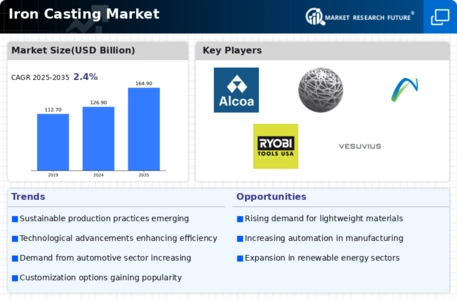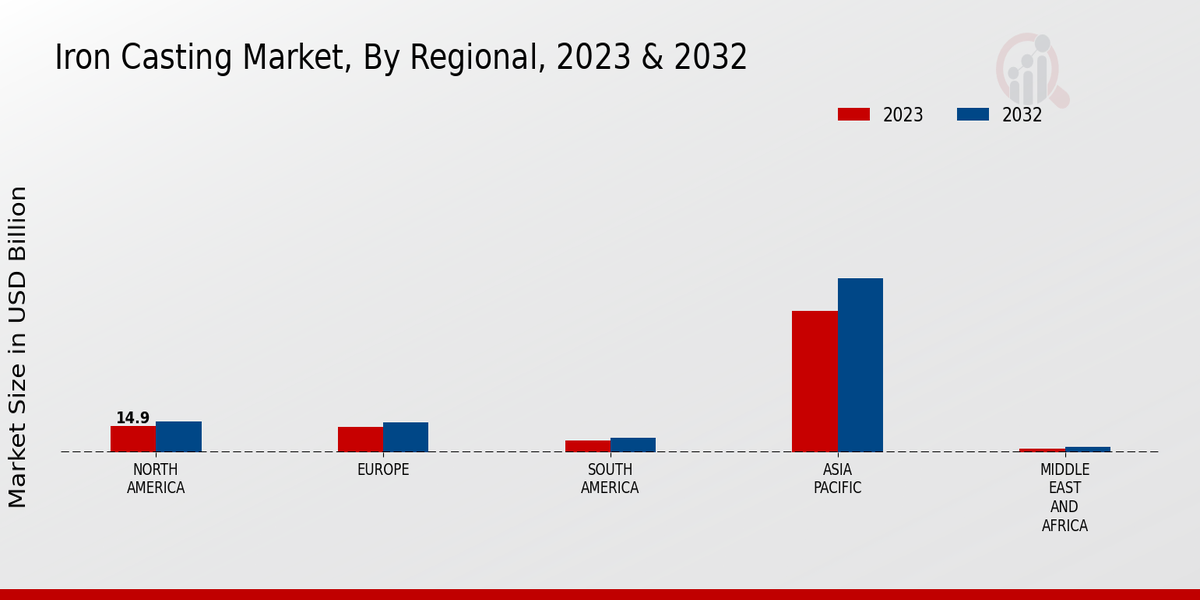Market Trends and Projections
Growing Demand from Automotive Sector
The automotive sector is a primary driver for the Global Iron Casting Market Industry, as it increasingly relies on cast iron components for engine blocks, transmission cases, and other critical parts. In 2024, the market is projected to reach 126.9 USD Billion, with the automotive industry accounting for a substantial share. The shift towards electric vehicles may also influence demand, as manufacturers seek durable and lightweight materials. This trend suggests that the automotive sector will continue to be a significant contributor to the growth of the Global Iron Casting Market Industry, potentially leading to a compound annual growth rate of 2.41% from 2025 to 2035.
Infrastructure Development Initiatives
Infrastructure development initiatives across various regions are likely to bolster the Global Iron Casting Market Industry. Governments are investing heavily in infrastructure projects, including bridges, roads, and railways, which require robust iron castings for structural integrity. For instance, in many developing nations, the push for modernization and urbanization is driving demand for durable materials. This trend indicates that the Global Iron Casting Market Industry could see a notable increase in demand as infrastructure projects ramp up, contributing to the overall market growth and potentially reaching 164.9 USD Billion by 2035.
Market Resilience Amid Economic Fluctuations
The Global Iron Casting Market Industry demonstrates resilience amid economic fluctuations, as cast iron remains a staple material across multiple sectors. Despite potential economic downturns, the demand for essential goods and infrastructure maintenance sustains the market. Industries such as construction and manufacturing continue to rely on iron castings for their robustness and longevity. This resilience indicates that the Global Iron Casting Market Industry is likely to maintain steady growth, adapting to changing economic conditions while fulfilling the ongoing need for durable materials.
Rising Demand for Energy Efficient Solutions
The rising demand for energy-efficient solutions is influencing the Global Iron Casting Market Industry. Industries are increasingly focusing on reducing energy consumption and emissions, prompting a shift towards materials that support these goals. Iron castings, known for their durability and thermal efficiency, are becoming preferred choices in various applications, including HVAC systems and industrial machinery. This trend suggests that as companies strive for sustainability, the Global Iron Casting Market Industry may witness a surge in demand for energy-efficient iron casting solutions, aligning with broader environmental objectives.
Technological Advancements in Casting Processes
Technological advancements in casting processes are reshaping the Global Iron Casting Market Industry. Innovations such as 3D printing and advanced molding techniques enhance production efficiency and reduce waste. These advancements enable manufacturers to produce complex designs with greater precision, appealing to industries that require high-quality components. As these technologies become more widely adopted, they may lead to increased competitiveness within the market. Consequently, the Global Iron Casting Market Industry could experience growth as companies leverage these innovations to meet evolving customer demands and improve operational efficiencies.







